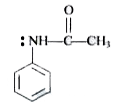Which of the following will have metal deficiency defect?
NaCl
FeO
KC
ZnO
The correct Answer is:B
To determine which compound exhibits a metal deficiency defect, we need to understand the concept of metal deficiency defects in ionic crystals.
1. Understanding Metal Deficiency Defect:
- A metal deficiency defect occurs when there is a vacant lattice site due to a missing cation (metal ion). This defect is characterized by the presence of fewer cations than anions in the crystal lattice.
2. Charge Compensation:
- To maintain electrical neutrality in the crystal, one of the neighboring metal ions may take on an extra positive charge. This is essential because the absence of a cation creates a positive charge imbalance.
3. Variable Valency:
- Metal deficiency defects are typically found in compounds where the metal can exhibit variable valency. Transition metals are known for their ability to exist in multiple oxidation states, making them candidates for this type of defect.
4. Analyzing the Given Options:
- We need to evaluate the options provided to see which one contains a metal that can exhibit variable valency:
- Option 1: NaCl - Sodium (Na) has a fixed valency of +1 and does not exhibit variable valency. Thus, it does not show a metal deficiency defect.
- Option 2: FeO - Iron (Fe) can exhibit variable valency (Fe²⁺ and Fe³⁺). Therefore, it can show a metal deficiency defect.
- Option 3: KCl - Potassium (K) has a fixed valency of +1 and does not exhibit variable valency. Thus, it does not show a metal deficiency defect.
- Option 4: ZnO - Zinc (Zn) typically exhibits a fixed valency of +2 and does not show variable valency. Therefore, it does not show a metal deficiency defect.
5. Conclusion:
- Among the given options, only FeO (Option 2) can exhibit a metal deficiency defect due to the variable valency of iron.
Final Answer:
The compound that will have a metal deficiency defect is FeO (Option 2).
---
- A metal deficiency defect occurs when there is a vacant lattice site due to a missing cation (metal ion). This defect is characterized by the presence of fewer cations than anions in the crystal lattice.
- To maintain electrical neutrality in the crystal, one of the neighboring metal ions may take on an extra positive charge. This is essential because the absence of a cation creates a positive charge imbalance.
- Metal deficiency defects are typically found in compounds where the metal can exhibit variable valency. Transition metals are known for their ability to exist in multiple oxidation states, making them candidates for this type of defect.
- We need to evaluate the options provided to see which one contains a metal that can exhibit variable valency:
- Option 1: NaCl - Sodium (Na) has a fixed valency of +1 and does not exhibit variable valency. Thus, it does not show a metal deficiency defect.
- Option 2: FeO - Iron (Fe) can exhibit variable valency (Fe²⁺ and Fe³⁺). Therefore, it can show a metal deficiency defect.
- Option 3: KCl - Potassium (K) has a fixed valency of +1 and does not exhibit variable valency. Thus, it does not show a metal deficiency defect.
- Option 4: ZnO - Zinc (Zn) typically exhibits a fixed valency of +2 and does not show variable valency. Therefore, it does not show a metal deficiency defect.
- Among the given options, only FeO (Option 2) can exhibit a metal deficiency defect due to the variable valency of iron.
The compound that will have a metal deficiency defect is FeO (Option 2).
Topper's Solved these Questions
Similar Questions
Knowledge Check
- Question 1 - Select One or More
Which of the following compounds have electron deficiency at ortho and para positions?
A B
B C
C D
D
Which of the following has Frenkel defect?
View SolutionWhich of the following is electron deficient-hydride?
View SolutionWhich of the following is not a vitamin deficiency disease
View SolutionWhich one of the following is a vitamin deficiency disease?
View SolutionWhich of the following is electron deficient species?
View SolutionWhich of the following is an electron deficient molecule?
View SolutionWhich one of the following is a protein deficiency disease?
View Solution
